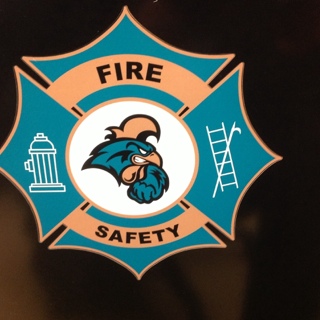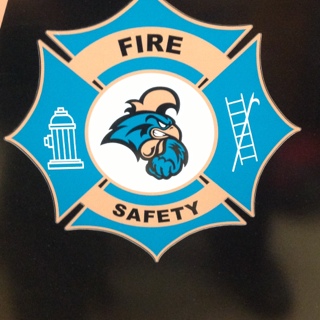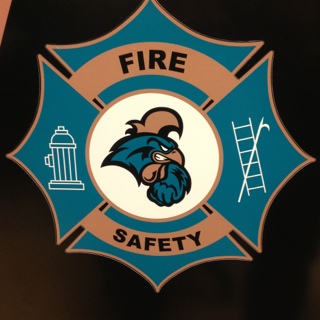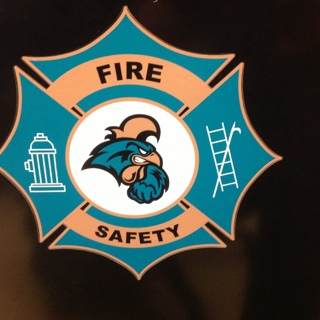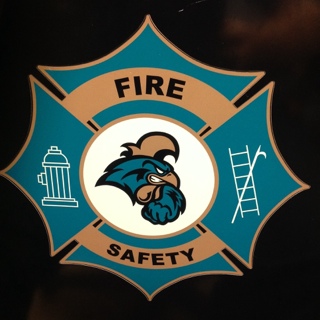Information
-
Coastal Carolina University Monthly Sprinkler Inspection
-
Document No.
-
Conducted on
-
Prepared by:
- Ted Sacra
- Dan Thomas
- Anthony Carter
-
Prepared by: Coastal Carolina University Fire Division
-
Location
-
Building Name or Number
- Adkins Field House
- Atheneum Hall
- Azalea Hall
- B&C Wetlands
- Bill Baxley
- Brittan Hall
- Brooks Stadium
- Coastal Science Center
- Cypress Hall
- Dogwood Hall
- Eaglin Hall
- Edwards Humanities & Fine Arts Building
- Elm Hall
- Hicks Dinning Hall
- HTC Center
- Human Resources
- Ingle Hall
- Lib Jackson Student Center
- Magnolia Hall
- Maple Hall
- Oak Hall
- Palmetto Hall
- Singleton Building
- Smith Science Building
- Swain Science Building
- Wall Building
- Wheelwright Auditorium
- UP 104
- UP 106
- UP 108
- UP 112
- UP 114
- UP 116
- UP 118
- UP 120
- UP 122
- UP 124
- UP 126
- UP 128
- UP 130
- UP 132
- UP 134
- UP 138
- UP 208
- UP 212
- UP 216
- UP 220
- UP 224
- UP 228
- UP 232
- UP 236
- UP 240
- UP 950
- UP 960
- UP 970
- UP 980
- UP 985
- UP 990
- UP 995
- UP 1000
- UP 1005
- UP 1010
- UP 1015
- UP 1020
- UP 1025
- UP 1030
- UP 1035
- UP 1040
- UP 1045
- UP 1055
- UP 1065
- UP 1075
- UP 1085
-
Date of Inspection:
-
All responses refer to the current inspection performed on this date.
-
Notes: 1) All questions are to be answered Yes, No, or Not Applicable. All NO answers are to be explained in Part III of this form. 2) Inspection, Testing and Maintenance are to be performed with water supplies (including fire pumps) in service, unless the impairment procedures of Chapter 11 of NFPA 25 are followed.
Part I - Owner's Section
-
A. Is the building occupied?
-
B. Has the occupancy classification and hazard or contents remained the same since the last inspection?
-
C. Are all fire protection systems in service?
-
D. Has the system remained in service without modification since the last inspection?
-
E. Was the system free of actuation of devices or alarms since the last inspection?
-
Signature and Date:
Part II - Inspector's Section
A. Inspections
2. Monthly Inspection Items (in addition to the above items):
-
A. Control valves with locks or electrical supervision in correct (open or closed) position?
-
B. Sprinkler wrench with spare sprinklers?
-
C. Gauges on wet-pipe system in good condition and showing normal water perssure?
-
D. Alarm Valves: Gauges show normal supply water pressure, free from physical damage, valves in correct (open or closed) position and no leakage from retarding chamber or drains?
Visual Check
-
A. Pressure Reducing Valves:
-
1. In open position and not leaking?
-
2. Maintaining downstream pressure per design criteria?
-
3. In good condition with hand wheels not broken?
-
B. Hydraulic nameplate, if provided, securely attached to riser and legible?
-
C. Fire Department Connections:
-
1. Visible and accessible?
-
2. Couplings and swivels not damaged and rotate smoothly?
-
3. Plugs or caps in place and undamaged?
-
4. Gaskets in place and in good condition?
-
5. Identification sign(s) in place?
-
6. Check valves not leaking?
-
7. Automatic drain valve in place and operating properly?
-
(If plugs or caps are not in place, inspect interior for obstructions).
-
D. Alarm devices free from physical damage?
Part III- Comments (Any "No" answers, test failures or other problems found with the sprinkler system must be explained here. Also, note here any products noticed on the system that have been the subject of a recall or a replacement program.)
-
Notes:
Part IV - Inspector's Information
-
Coastal Carolina University
-
Signature of Inspector and Date:
-
I state that the information on this form is correct at the time and place of inspection, and that all equipment tested at this time was left in operational condition upon completion of this inspection except as noted in Part III above.
Backflow Preventer
-
Tested for NFPA 25 Requirements ONLY. Certification DOES NOT fall within the scope of this inspection.
Fire Alarm
-
Inspection & Certification is to be performed by an Alarm Contractor.
Fire Extinguisher(s)
-
Inspection & Certification is to be performed by Others.
NFPA 25 2008:4.1.5 "changes in Occupancy, Use, Process, or Materials"
-
The property owner or occupant shall not make changes in the occupancey, the use or the material used or stored in the building without evaluation of the fire protection systems for their capability to protect the new occupancy, use or materials.
NFPA 25 2008:4.1.6 "Addressing Changes in Hazard"
-
Where changes in the occupancy, hazard, water supply, storage commodity, storage arrangement, building modification, or other condition that affects the installation criteria of the system are identified, the property owner or occupant shall promptly take steps such as contacting a qualified contractor, consultant or engineer, and the authority having jurisdiction, to evaluate the adequacy of the installed system in order to protect the building or hazard in question.
